Panasonic entered the digital camera market in 2001, and in 2006 produced the first of its popular ZS range (TZ outside the US), a series of cameras with a small body and a large zoom range designed to appeal to travellers.
It's safe to say that in the 10 intervening years, lots of advancements have been made, many of which Panasonic itself has been first to introduce. ZS / TZ cameras have proved a big hit over the years, and with the shift towards more high-end features in compact cameras, Panasonic has now raised its game with a new model, the Lumix ZS100 / TZ100.
The most noteworthy change that the TZ100 brings is the move from a 1/2.3-inch sensor like the unit found in the ZS60 / TZ80, to a much larger 1-inch type device with 20.1 million effective pixels. One inch sensors have become very popular in the past few years, first with Sony's RX100 range, and more lately, with Canon's latest G series compact cameras .
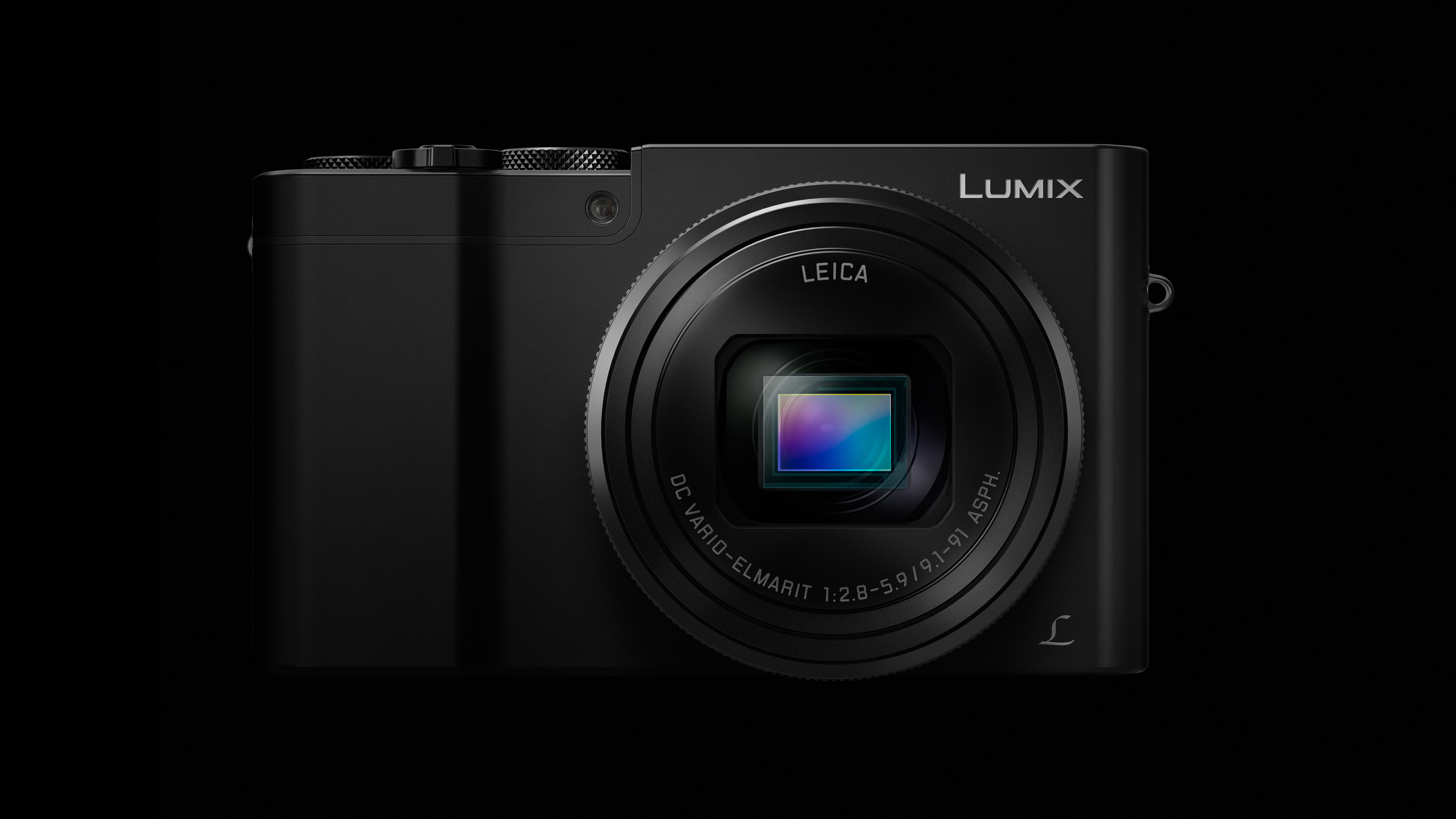
Features
- 1.0-inch CMOS sensor, 20.1MP
- 25-250mm f/2.8-5.9 zoon lens
- 4K video capture
A 1.0-inch sensor immediately raises the ZS100 / TZ100 above the level of many other rival travel cameras. It's the same same sensor as is found in Panasonic's top-end bridge camera, the very successful FZ1000. In the ZS100 / TZ100, it is combined with a new Venus Engine processor and a Leica DC Vario-Elmarit 25-250mm f/2.8-5.9 zoom lens. There's also Panasonic's Power OIS stabilisation system for stills photography and 5-axis hybrid OIS stabilisation for video.
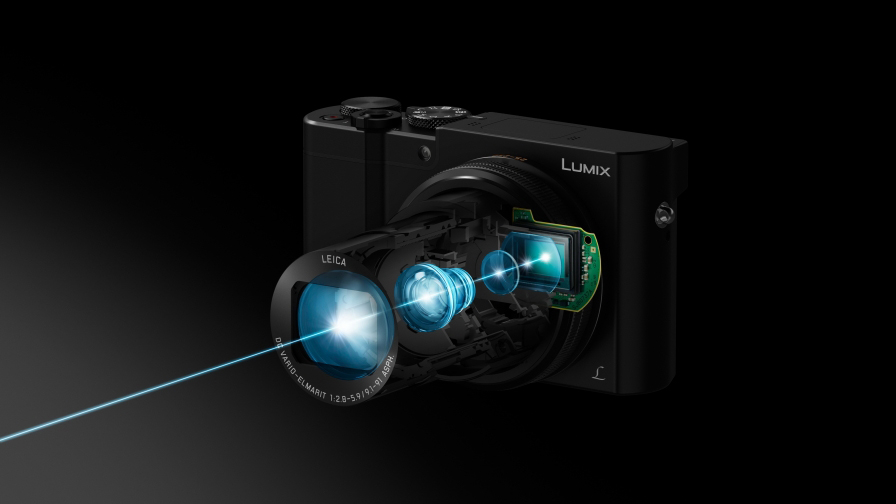
Despite the increase in pixel count over that of last year's ZS50 / TZ70, the fact that the sensor is 4x larger in the ZS100 means that the pixels are 2.4x bigger, which should be very good news for image quality and noise control in particular. This has given Panasonic the courage to give the ZS100 a native sensitivity range of ISO125-12,800, and there are also expansion settings of ISO80, 100 and 25,600.
The 10x optical zoom means that Panasonic is describing the ZS100 as belonging to an entirely new sector of the travel compact market – premium superzoom. All of the other small form (pocketable) one-inch sensor cameras are limited in their zoom range, so it's quite exciting to see the company coming up with a camera which should appeal even more to travelling photographers.
Given Panasonic's enthusiasm for all things 4K, it's no surprise that the ZS100 has 4K recording capability (at 30 or 25 frames per second) and 4K Photo modes are present to make it easy to shoot 8MP still images at 30 frames per second (fps). There's also Panasonic's latest addition to the 4K fold, Post Focus mode. In this mode the camera takes a sequence of images with different focus distances and you can choose the shot in which your subject is sharp post capture.
In addition, the ZS100 has 4K cropping which enables the composition of 4K footage to be improved and down-sampled to Full HD in-camera.
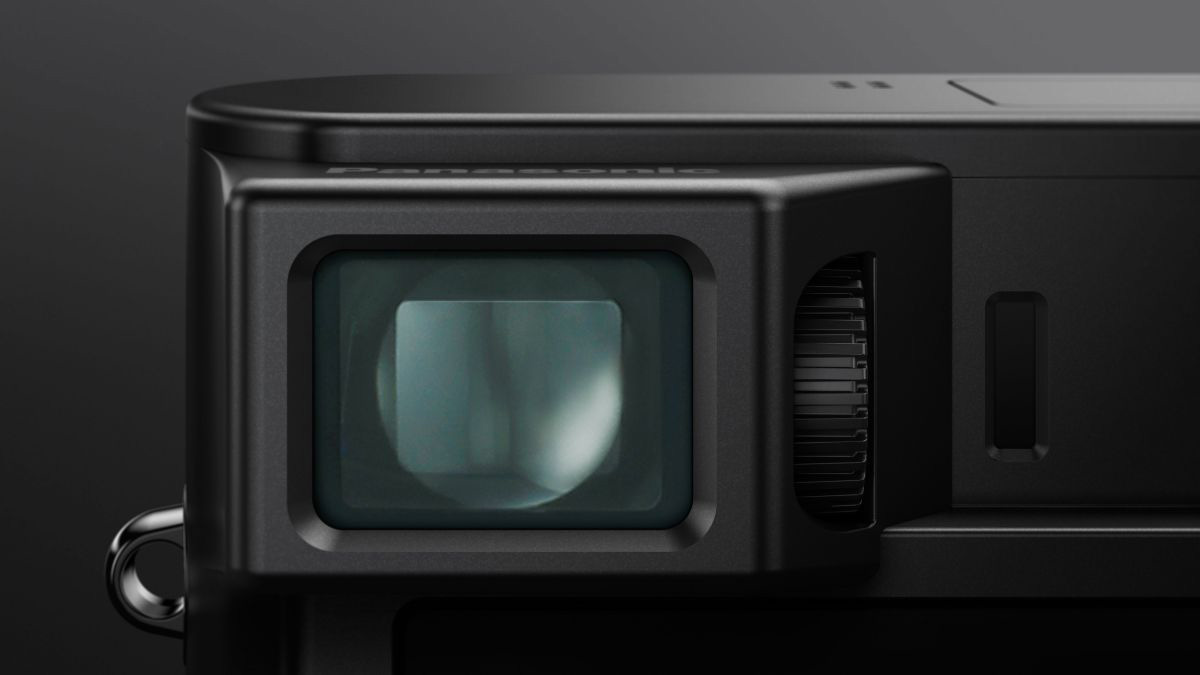
Viewfinders are making a welcome comeback to compact cameras and the ZS100 / TZ100 has a 0.2-inch, 1,160,000-dot electronic viewfinder built-in to make it easier to compose images in bright ambient light. Naturally this is accompanied by a larger screen on the back of the camera, and in this instance it's a 3-inch 1,040,000-dot unit that is touch-sensitive. Helpfully there's an eye sensor to detect when the camera is held to the eye to switch off the main screen and activate the EVF.
Another cherry on the specification cake is the fact that the ZS100 can record raw files as well as JPEGs. This sits well with the aperture priority, shutter priority and manual exposure modes that accompany the automated shooting options. Also, the shutter speed may be set to 60-1/2000 secs when the mechanical shutter is in use or 1-1/16000 secs with the electronic shutter. It should therefore be possible to freeze very fast movement and use the widest aperture in bright light.
Interestingly, although Wi-Fi connectivity is present, NFC technology is not – Panasonic says that this hasn't proved as widely used as expected. In terms of competition, the ZS100 goes up against the latest one-inch compact cameras from rivals Sony and Canon, including the RX100 IV and the G7X Mark II – but neither feature such extensive zooms. Arguably, therefore, the ZS100 doesn't currently have any close competitors.
Build and handling
- Solid metal construction
- Black and Silver and Black finishes
- 310g
One of the most exciting aspects of the ZS100 / TZ100 is that it's not a great deal bigger than the ZS60 / TZ80 announced at the same time. It's about 6mm (0.236 inches) thicker than the ZS60, plus 2.2mm (0.0866 inches) longer and 0.5mm (0.0197 inches) wider. That makes it just about small enough to slip in a jeans pocket and it has a metal body shell that feels solid enough to suggest it would survive being carried in that way over a long period of time.
The ZS100 looks fairly similar to the LX100, Panasonic's other current premium compact. It has fairly clean lines, along with a step in the top-plate. The camera will be available in black, or black and silver finishes, with the black and silver version having a red band around the small silver portion of the top-plate. This is a new styling for Panasonic, so it will be interesting to see if this appears elsewhere in the future.
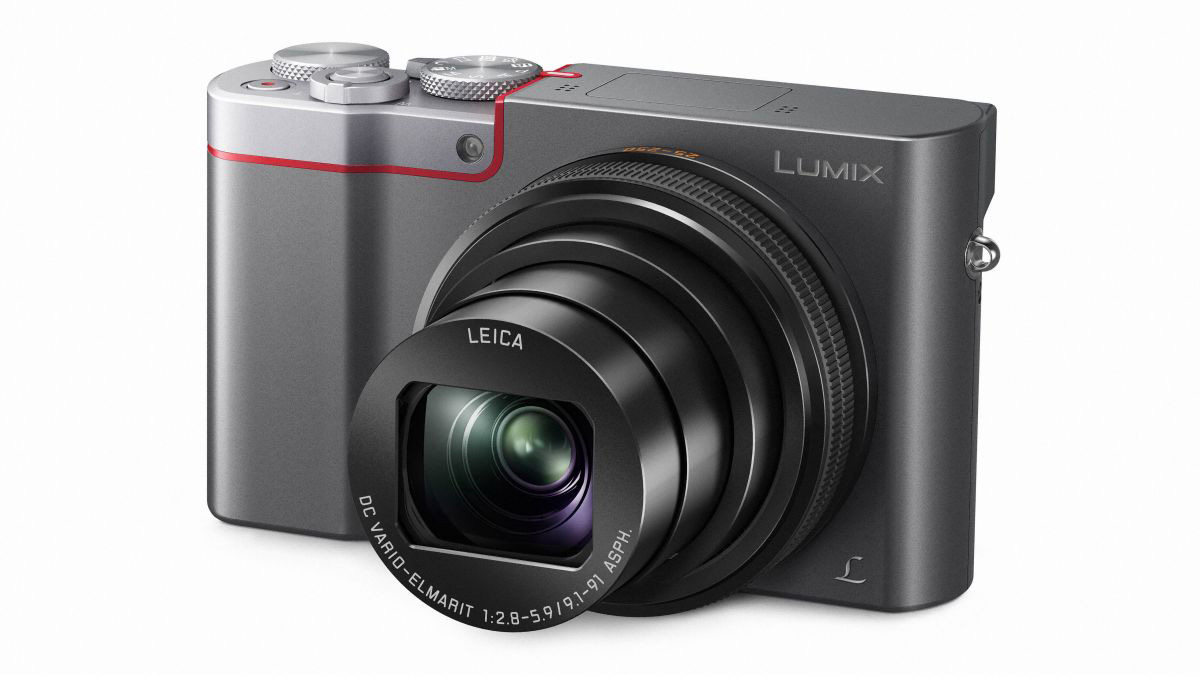
On the front of the camera there's no texture or grip, but there's an indent which helps the camera to sit nicely in your hand. Nevertheless, it makes sense to attach the wrist strap to give an extra degree of security.
Almost all of the ZS100's buttons are grouped towards the right hand side of the camera, making it easy to use one-handed. On top of the camera are two large dials. One is an exposure mode dial which means you can quickly switch between shooting modes (there's a collection of automated and scene modes, along with more advanced program, aperture priority, shutter priority and manual options).
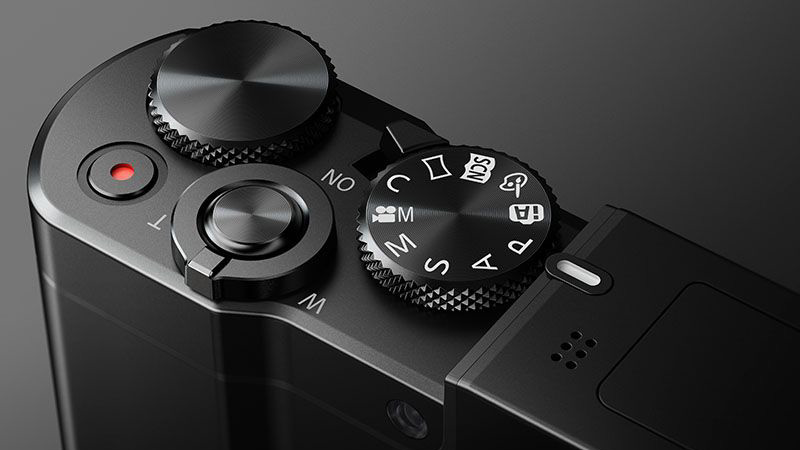
The second dial controls different functions depending on the shooting mode you're in. If you're working in aperture priority, you can use it to alter aperture, or shutter speed if in shutter priority. It's in a convenient position for your thumb and has a satisfying amount of stiffness when you turn it.
There's also a ring around the camera's lens which, again, has a different default function depending on the shooting mode. Both this and the dial on top of the camera can be customised to change something else if you prefer. There are also a further four function buttons (marked Fn), which each have default functions, but can be changed to suit a different purpose if you wish. There are five more "virtual" function buttons, which are accessed via the touchscreen and are also customisable.
The (physical) Fn3 button accesses the ZS100 / TZ100's quick menu by default. You can use this menu to move quickly between common settings, such as ISO, metering and white balance. By default, two of the function buttons are used to access the camera's 4K photo modes.
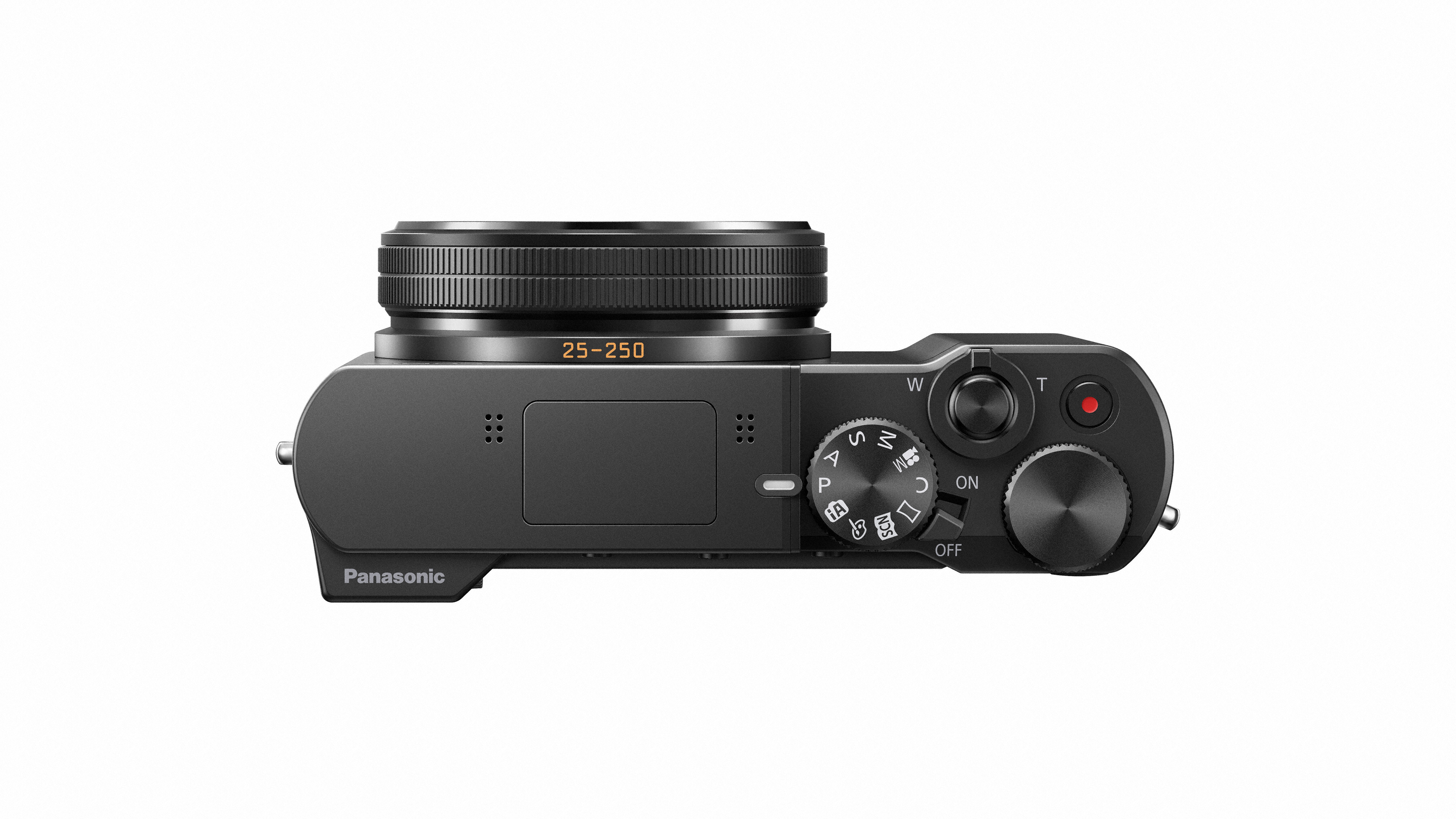
Unlike the electronic viewfinder in Sony's popular RX100 III and RX100 IV compact cameras with 1-inch type sensors, the ZS100's electronic viewfinder is ready for action at any time that the camera is powered up and it doesn't need to be popped out for use. Furthermore, there's a sensor which automatically detects when the camera has been lifted to your eye to switch on the viewfinder, and switch the screen off. Although undoubtedly useful and a bonus on a pocketable compact camera, the ZS100's viewfinder is small, and while the image is clear and sharp, because of its small size it's unlikely you'll want to use the viewfinder for every shot.

The ZS100 / TZ100's screen is touch-sensitive, which means you can use it to set the focus point, simply tapping an area on the screen you want to use (if you have 1-Area focusing selected). You can also use it to navigate through and around the main menu and the function menu. If you don't like using touch screens, the good news is that everything can also be controlled by a physical button, or a combination of buttons, if you prefer.
In order to use the super fast shutter speeds that the electronic shutter facilitates, you'll need to change from mechanical shutter in the camera's main menu. Once you've done this, you can move past the 1/2000 fastest shutter speed offered by the mechanical shutter and reach speeds up to 1/16000.
Autofocus
- 49-point AF
- Face/Eye detection
- Post-focus function
Lumix cameras have always delivered the goods when it comes to AF speed, and the ZS100 / TZ100 is no different – in good light you can expect the camera to lock-on quickly with almost no delay.
Even when the light levels drop, the ZS100 performs very well, though the contrast-detect AF will start to struggle when light levels are really poor – but that's to be expected.
Performance
- 10fps burst shooting (6fps with continuous AF)
- Decent optical quality
- 300 shot battery life
The ZS100 / TZ100's all-purpose metering system provides generally accurate exposures, only failing slightly when photographing something with areas of high contrast – but it's no more than we would expect from any camera. Similarly, the automatic white balance system copes well when faced with different lighting conditions. Slightly warmer tones are produced when photographing under artificial light, so if you're concerned with ultimate accuracy, either switch to a preset value or set a custom white balance.
Detail is kept well throughout the ZS100's optical zoom range, with roughly the same amount of detail at the far reach of the telephoto zoom as seen at the wide angle end.
The ability to shoot at 10 frames per second (fps) is pretty impressive, while even with it dropping down to 6fps when you want to use the ZS100's continuous AF is nothing to be sniffed at.
At 300 shots, battery life is reasonable, but if you're intending to use the viewfinder quite a bit, this does drop to 240 shots, so if you're going to be away for a long weekend or longer, then it might be worth thinking about investing in another battery.
Image quality
- ISO125-12,800, expandable to 80-25,600
- Can record plenty of detail
- Pleasing images straight from camera
As the ZS100 / TZ100 uses the same sensor as the FZ1000, we had high hopes that image quality would be good. Happily, those hopes have been borne out both by results from our labs and real-world images.
JPEG images display a great amount of vibrance and punch, without straying too far into unrealistic territory, while the overall impression of detail is fantastic.
At normal printing (A4 or smaller) or on-screen viewing sizes, the ZS100's images, have detail comparable with shots taken on cameras with much larger sensors, such as the GF7 (which has a Four Thirds sensor). And at 100% on screen, despite a little smoothing, it's hard to tell the ZS100's low sensitivity JPEG images apart from the GF7's.

Our lab tests indicate that the ZS100 / TZ100 competes very strongly with the Sony RX100 IV and Canon G5 X, all of which have 1.0-inch type sensors. For signal to noise ratio, the ZS100 beats the other cameras on test throughout the ISO 100-800 range, and most significantly at ISO200. From ISO 1600, the ZS100 is extremely closely matched to the other cameras, while at ISO 3200, the ZS100 beats both the Sony and the Canon.
It's a slightly more complicated picture for the raw format files, where at the lower end of the scale (ISO100-200) the ZS100 is beaten by the Sony and Canon cameras, but from ISO800 right up to ISO12,800, it beats all of the other cameras on test.
For dynamic range, the story is also a little more patchy. For JPEG images taken at the lower end of the scale (ISO200-800), the ZS100 is beaten by the Canon and Sony, but is still pretty good. At 1600, the ZS100 is pretty much tied with the Sony and Canon, while at ISO3200, the Canon beats the ZS100 very slightly, but the ZS100 beats the Sony. At 6400, all of the cameras are closely matched, but at 12800, the ZS100 wins out more significantly.
Looking at the raw format files, performance is particularly impressive. Although at ISO200 it is beaten ever so slightly by the Canon, from ISO 400 the ZS100 beats the other cameras on test, at times by quite a significant margin.
In terms of resolution, we can use a combination of the labs test and the real world images to make a judgement on how well detail is resolved. At the low-medium end of the ISO run (ISO200-1600), the ZS100 is capable of matching Canon's G5 X sensor, and is slightly worse than Sony's RX100 IV. However, at the higher end of the spectrum (ISO3200-6400), it's better than Canon and matches the Sony's capability, while at 12,800, the ZS100 is the best performer.
Looking at a corresponding raw file, it's clear that the camera is applying a fair amount of noise reduction to JPEG images. While that noise reduction generally results in natural-looking, low-noise images, if you're photographing something particularly detailed, you may appreciate the ability to bring that back by editing the raw format files.

When all noise reduction is turned off, images taken at ISO3200 (see shot above) and 6400 have visible chroma noise at 100%, but it's fairly evenly spread throughout the image and therefore easily tackled by noise reduction software. Even without noise reduction being applied the images still look decent at normal printing and viewing sizes.

Using the electronic shutter allows you to shoot at wide apertures in bright sunlight – this image above has been taken with a 1/16000 sec shutter speed.
Verdict
Panasonic takes aim squarely at the pocket-friendly 1.0-inch sensor compact camera market with the ZS100 / TZ100, upping the stakes with a 10x optical zoom, something which other manufacturers haven't yet produced.
Although 1.0-inch sensors aren't particularly new or exciting any more, when you couple one with a 10x optical zoom, the resulting camera becomes a much more flexible option which is bound to appeal to travelling photographers looking for something high quality, but convenient.

The ZS100 / TZ100 produces lovely JPEG images, while the raw format images give you good scope to bring out extra detail should you need it. The sensor happily competes with Sony and Canon, who have so far been the big players in the 1.0-inch sensor market. The large sensor facilitates decent low-light shooting, making it a good all-rounder camera.
It's also an enjoyable camera to use, with a good number of buttons and dials, a very responsive touch sensitive screen and an (albeit small) electronic viewfinder. There's also inbuilt Wi-Fi and a range of creative filters. It would perhaps have been nice to see a tilting or articulating screen, but that may have added extra bulk, and certainly extra cost to the camera.
Panasonic claims that it has created a new segment of the market with this camera, and it's hard to disagree with that claim.
Competition

Panasonic Lumix ZS50 / TZ70
If you're not that fussed about a 1.0-inch sensor, then the ZS50 (TZ70 outside the US) might be the camera for you. With a big 30x zoom, auto and manual controls and the ability to shoot raw files – a big bonus for keen photographers who want the best quality from a small camera, there's little to fault for the price. The ZS50 even squeezes in an electronic viewfinder. It's the Swiss Army Knife of travel cameras, combining convenience, quality and control.
Read the full review: Panasonic Lumix ZS50 / TZ70

Panasonic Lumix LX10 / LX15
Panasonic's answer to the RX100 series, the LX10 (known as the LX15 outside the US) is a very capable premium pocket compact camera. There's no EVF like the ZS100 / TZ100, but does benefit from a faster (if shorter) zoom lens and more enthusiast-focused handling, making it a joy to use.
Read the full review: Panasonic Lumix LX10 / LX15

Sony RX100 III
First things first, it doesn't have such an impressive zoom, but the 24-70mm zoom is fast (f/1.8-2.8) and the viewfinder is that much bigger that the ZS100 / TZ100. While the RX100 V is almost double the price, this represents great value.
Read the full review: Sony RX100 III